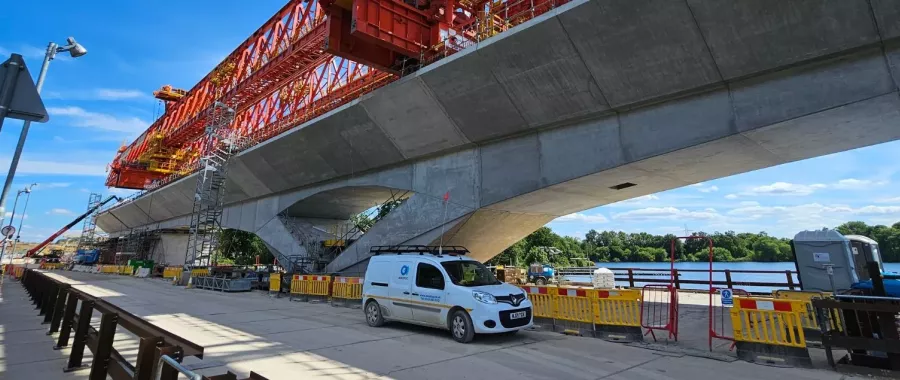Contracted by Alun Griffiths (Contractors) Limited, SOCOTEC Monitoring carried out the supply, installation and monitoring of geotechnical instrumentation during phase four of the A4440 Worcester Southern Link Road Improvement Scheme. The scheme is being delivered by Worcestershire County Council.
Summary of works
Client: Alun Griffiths (Contractors) Limited
Contract: A4440 Worcester Southern Link Road Improvement Scheme

Case Study
Project and Site Background

The A4440 Worcester Southern Link Road is an essential part of the county’s main road network, providing links between the M5, south and west Worcester, Great Malvern, the wider Malvern Hills District, Ledbury, Upton and Herefordshire. As such, it is one the most heavily used sections of Worcestershire’s road network, with approximately 30,500 vehicles travelling on it per average weekday. It is also an important bypass to the city centre, providing one of only two road crossings of the River Severn in Worcester City, and offering an alternative route to the city centre.
The A4440 was performing poorly, with regular and severe traffic congestion leading to long delays for road users. To alleviate pressure and provide significant improvements to average journey times, works began to dual the entire length of this road, from the M5 to the Powick roundabout, including in this, the final phase of works, the construction of a new Carrington Bridge, Powick Common Viaduct and Hams Way Footbridge.
SOCOTEC Monitoring provided monitoring equipment and services to assess construction progress and confirm the settlement and slope stability before, during and after the widening works to the existing embankment.
The A4440 Worcester Southern Link Road is an essential part of the county’s main road network, providing links between the M5, south and west Worcester, Great Malvern, the wider Malvern Hills District, Ledbury, Upton and Herefordshire. As such, it is one the most heavily used sections of Worcestershire’s road network, with approximately 30,500 vehicles travelling on it per average weekday. It is also an important bypass to the city centre, providing one of only two road crossings of the River Severn in Worcester City, and offering an alternative route to the city centre.
The A4440 was performing poorly, with regular and severe traffic congestion leading to long delays for road users. To alleviate pressure and provide significant improvements to average journey times, works began to dual the entire length of this road, from the M5 to the Powick roundabout, including in this, the final phase of works, the construction of a new Carrington Bridge, Powick Common Viaduct and Hams Way Footbridge.
SOCOTEC Monitoring provided monitoring equipment and services to assess construction progress and confirm the settlement and slope stability before, during and after the widening works to the existing embankment.
The Monitoring Scheme
Following the drilling of boreholes using cable percussive methods, vibrating wire piezometers were installed to measure pore water pressures, ensuring the anticipated dissipation rate of excess pore water was achieved.
Due to local and seasonal ground water fluctuations within the alluvium, identifying the centre of the fully saturated layer of alluvium ahead of construction was not possible. Therefore, strings of fully grouted piezometers installed at 1m spacings throughout the depth of the alluvium were required. The vibrating wire piezometers were connected to a wireless node, with a gateway positioned at a suitable location within the site compound with access to mains power.
Settlement plates were also installed at the toe of the existing embankment in the same locations as the piezometers. Monitoring settlements throughout the construction of the embankment widening, and in the critical months following completion, the settlement plates provided essential information regarding the total induced settlements and long-term settlements.
Data from the piezometers was delivered to the client via SOCOTEC Monitoring’s data visualisation portal, Calyx OMS, providing a central repository for instrumentation and monitoring information and automated reporting. The client carried out their own levelling surveys on the settlement plates.





